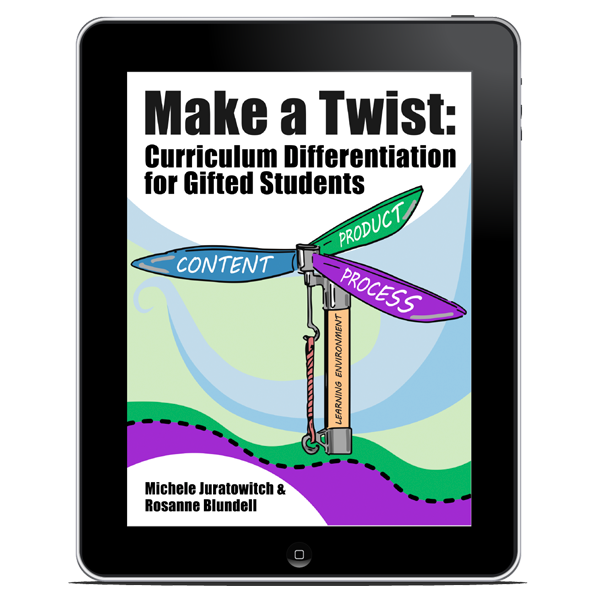Children learn and develop at different speeds, have different learning patterns and achieve at different rates. Those who achieve developmental milestones ahead of others at a similar chronological age are considered advanced in their development. Children who learn rapidly and grasp concepts more easily than others of their age are cognitively advanced or accelerated learners. Despite these differences, a child’s date of birth is generally used to determine when a child can enter formal education; so children who have significantly different rates of learning are placed together in school, according to their chronological age.
This results in children with a wide range of abilities and skills being placed together in classes as students are not usually placed in year levels according to their stage of development, learning abilities or academic skills. Teachers can use ability grouping to allow students with similar levels of academic skills to benefit from learning together. This strategy works very well for most students; however some very capable students have the ability to learn beyond the level that the rest of the students in their class are learning.
For students to remain engaged in school they must learn at a pace and level that is well matched to their intellectual abilities and academic needs. Some students are already beyond the curriculum for that year level and they need opportunities to learn with students who are currently learning at a similar level. Gifted students have the ability to learn at an accelerated pace and need exposure to more advanced curriculum. Some of these students should be considered for one of the many forms of academic acceleration, including subject and year level acceleration.
Schools are becoming aware of extensive research that supports the use of academic acceleration as one of the most effective ways of providing for the intellectual, academic, social and emotional needs of gifted students. Research on the various forms of acceleration is rich and consistent in its reporting of very positive academic effects, and positive, but moderate to low effects, for socialisation and self-esteem (Rogers, 1991; 2002; 2004; Lubinski, 2004; Olzewski-Kubilis, 2004; Brodi, Muratori & Stanley, 2004). Despite this research, there is still much hesitancy about accelerating students.
School administrators, teachers and parents may be reluctant to accelerate because of concerns about a student’s social and emotional maturity. It is important to consider the gifted student’s development and needs as part of any decision to accelerate; however the social and emotional characteristics associated with giftedness (especially sensitivity, intensity and the need to socialise with others at a similar developmental level) may be misinterpreted as emotional immaturity or social difficulties, especially by those unfamiliar with the traits of gifted students.
Perhaps part of the difficulty with this intervention for high ability students lies around the use of the term “accelerate”. There is a tendency to think of this word in relation to driving a car. When the accelerator pedal is pushed, it makes the car go faster. Teachers and parents of gifted children (particularly those who are already concerned about being perceived as ‘pushy parents’) may regard academic acceleration as equivalent to pushing a child to move faster through school. Let’s be perfectly clear about this: academic acceleration does not involve pushing a child to go faster.
Another way to think about acceleration is that the use of this educational strategy allows a student to make progress through school according to their own speed of learning, without being hindered. Academic acceleration effectively releases the brakes that age-based grouping imposes on gifted learners. It was this paradigm shift regarding academic acceleration that influenced the choice of the title for the research report about Australian acceleration practices, “Releasing the Brakes for High-Ability Learners”.
Research that has examined acceleration is unequivocal: acceleration is a highly effective intervention strategy for gifted students. Acceleration is not the only way to provide for gifted students; nor is acceleration suitable for every gifted child; however acceleration should be included as one of the provisions available for gifted students.

Make a Twist: Curriculum Differentiation for Gifted Students is a resource book full of ideas, strategies, and higher-order thinking challenges to engage high-ability learners. Learn more about the hardcover book and e-book here.
Certain (free) e-Book readers are required to view the interactive e-book.
Any decision to accelerate a student should be based on sound evidence, made after careful consultation, with collaboration between home and school and always, with consideration for the needs of the student.
The research is clear: acceleration works. To ensure that a particular form of acceleration is the optimum way to meet a gifted student’s needs, it is important to consider if acceleration it is the best option for this student; at this time; in this context.
Emeritus Professor Miraca Gross, Director of the Gifted Education, Research Resource and Information Centre (GERRIC) at the University of New South Wales and co-author of reports mentioned here, maintains that when considering and implementing acceleration, we should ‘hasten slowly’. It is important not to delay in considering acceleration as an option for gifted students; however decisions about acceleration should be made with care and based upon sound knowledge about giftedness and the research about acceleration.

Co-author of Releasing the Breaks for High-Ability Learners and of Make a Twist, Michele Juratowitch, provides professional advice, counselling and support for gifted children. For more support on the acceleration of gifted students, social and emotional support for gifted students, support in approaching a school about acceleration, professional development or advice, please get in touch with Michele Juratowitch, Clearing Skies.
References
Rogers, K. B. (1991). A best-evidence synthesis of the research on academic acceleration. Proceedings from the 1st Biennial Wallace Research Symposium for Talent Development. New York: Trillium Press.
Rogers, K. B. (2002). A research synthesis of “best practices” in gifted education: What does the research say? Keynote presentation for the 5th Biennial Wallace Research Symposium for Talent Development. Iowa City. IA.
Rogers, K. B. (2004). Academic effects of acceleration. In N. Colangelo, S.G. Assouline and M. Gross (Eds). A nation deceived how schools hold back America’s brightest students: The Templeton National Report on Acceleration. Volume II. (pp 47-57). Iowa City: Belin Blank International Centre for Gifted Education and Talent Development.
Lubinski, D. (2004). Long-term effects of educational acceleration. In N. Colangelo, S.G. Assouline and M. Gross (Eds). A nation deceived how schools hold back America’s brightest students: The Templeton National Report on Acceleration. Volume II. (pp 23-37). Iowa City: Belin Blank International Centre for Gifted Education and Talent Development.
Brodi, L. E., Muratori, J. C. & Stanley, J. C. (2004). Early entrance to college: Academic, social, and emotional considerations. In N. Colangelo, S.G. Assouline and M. Gross (Eds). A nation deceived how schools hold back America’s brightest students: The Templeton National Report on Acceleration. Volume II. (pp 97-107). Iowa City: Belin Blank International Centre for Gifted Education and Talent Development.
